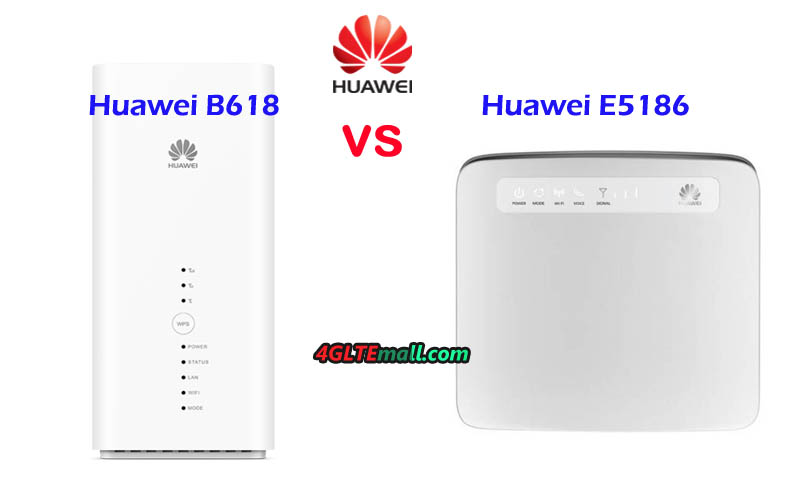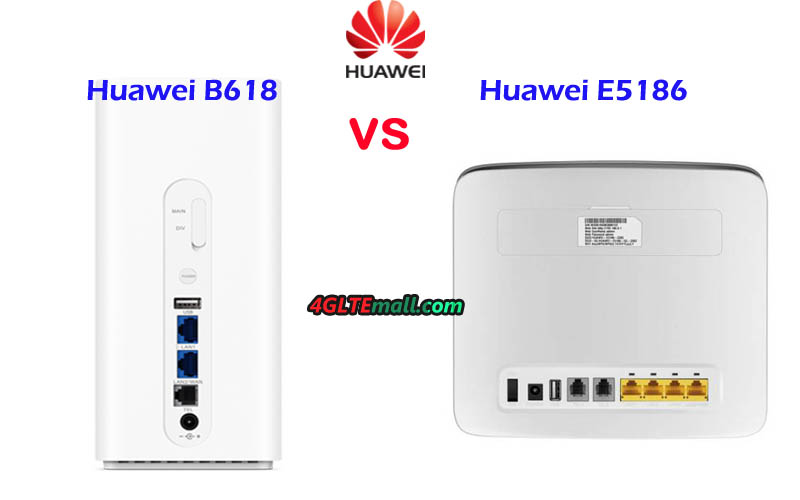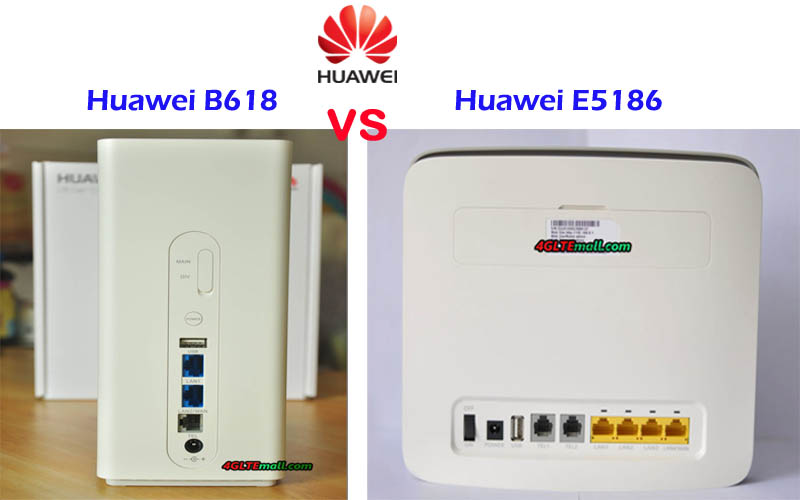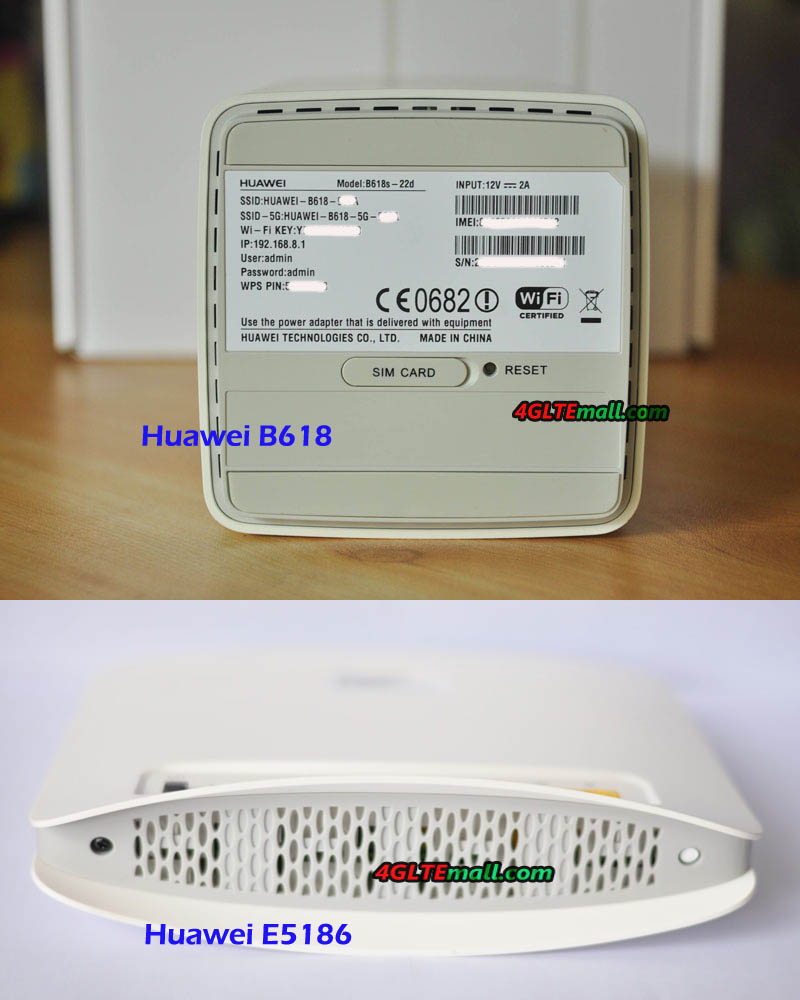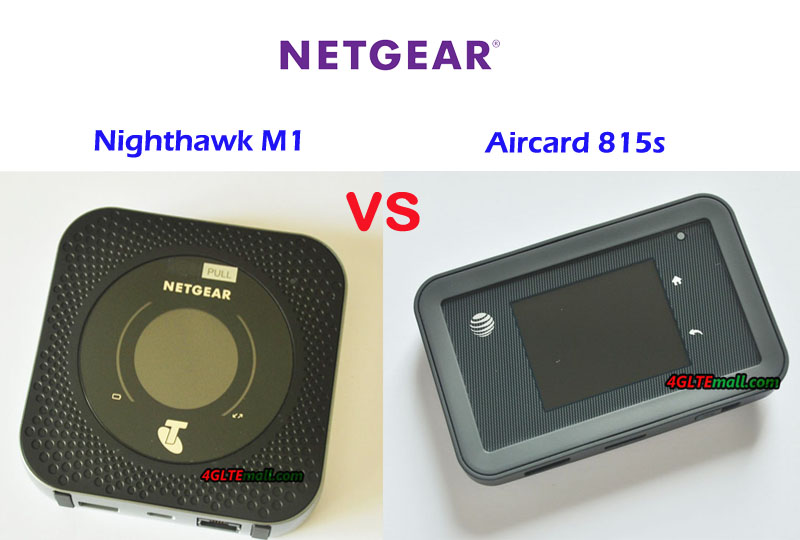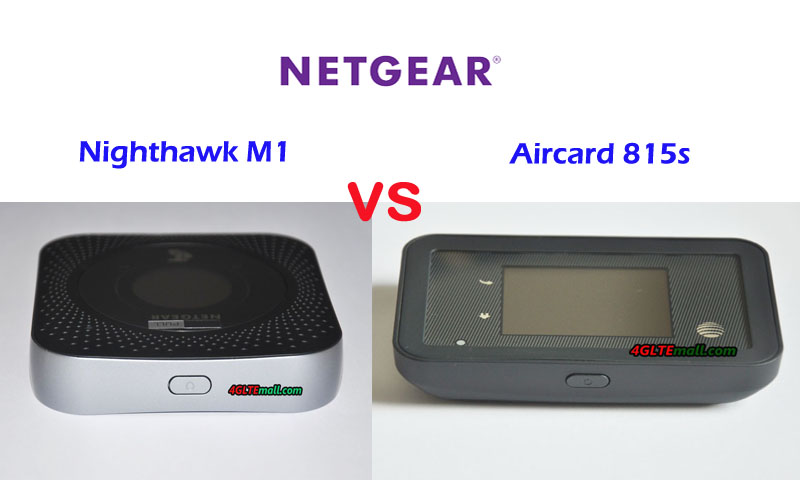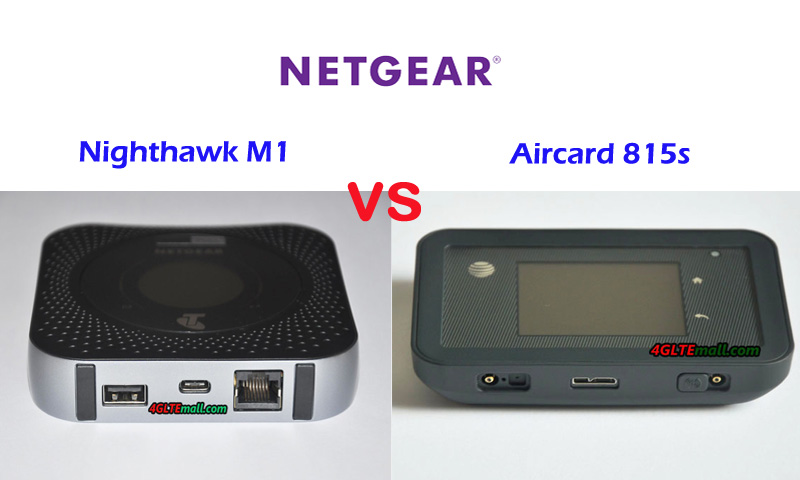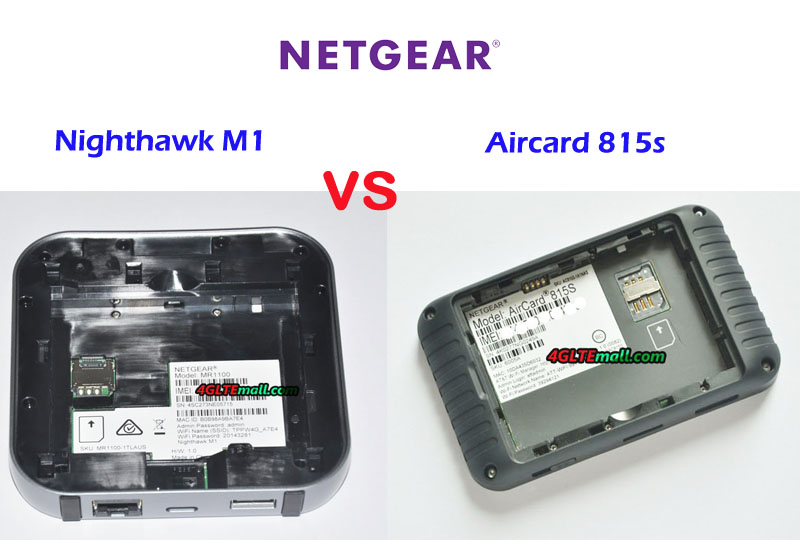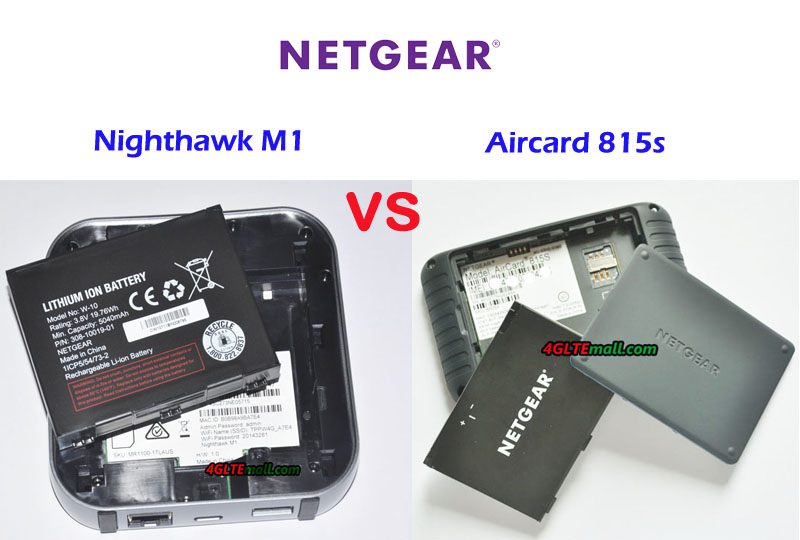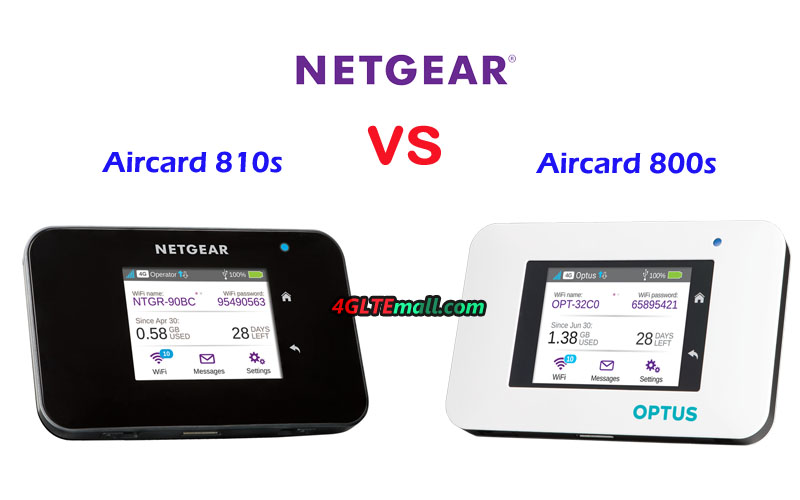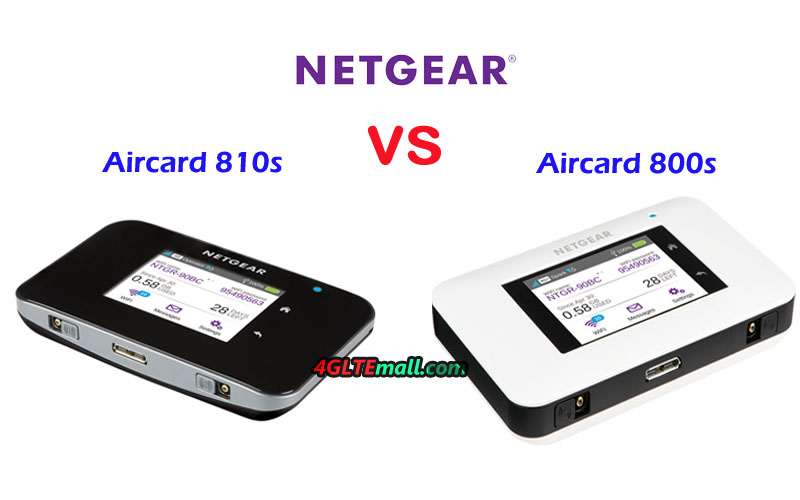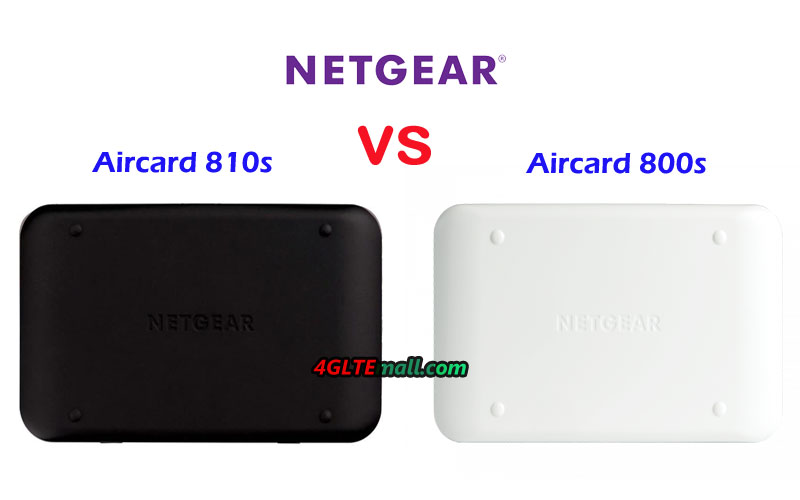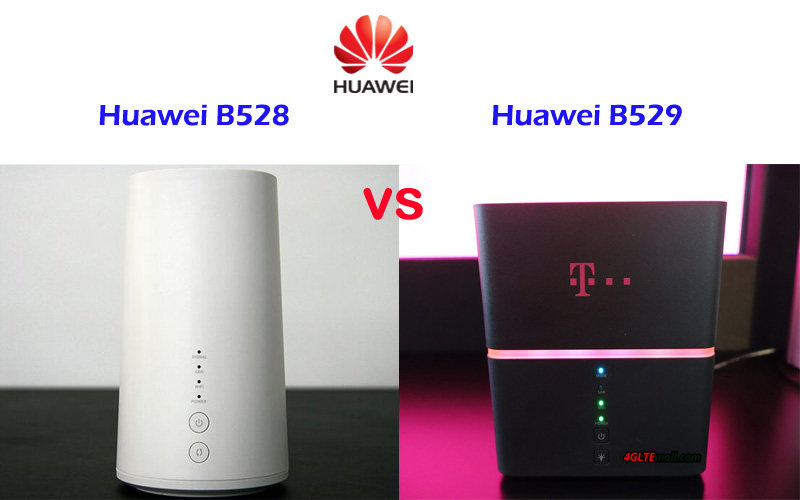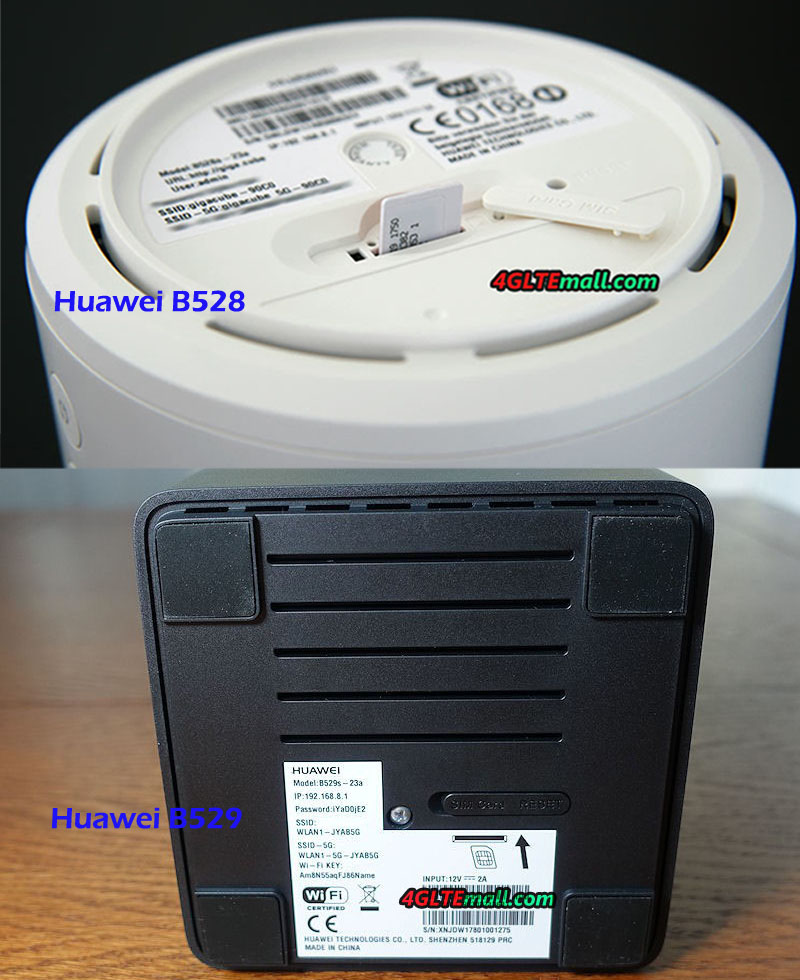4G Router
-
[PR]
×
[PR]上記の広告は3ヶ月以上新規記事投稿のないブログに表示されています。新しい記事を書く事で広告が消えます。
-
LTE CPE B593 VS Huawei E5186
As a top network solution provider, Huawei LTE Gateways are an important series of wireless products for home or office networking. Huawei B593 is the world’s first 4G LTE WiFi routers with Ethernet port and the new competitors are continuously presented to the public by Huawei in following years. Huawei E5186 wireless router is one of them. If you want to change the 3G router or ADSL connection to Huawei 4G Gateway, you may ask: what’s the difference between the Huawei B593 and Huawei E5186? Which one is better in performance? In this article, we will review the appearance, interfaces, specs and variant models to provide possible answers for you.
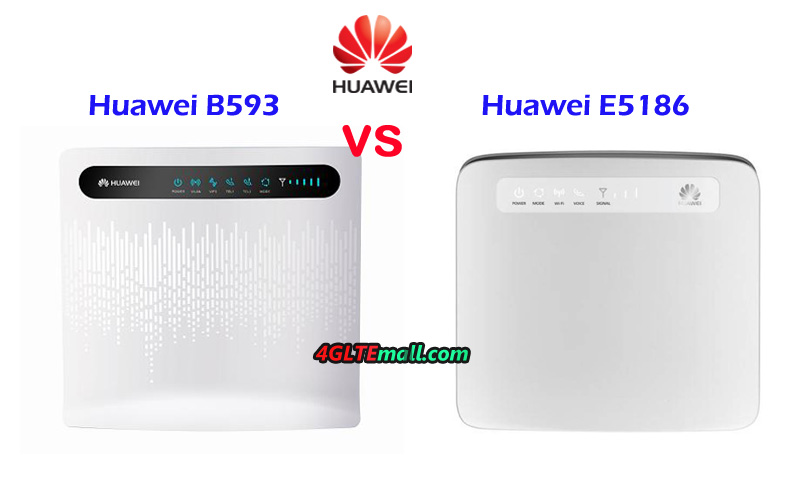 Huawei E5186 VS B593 Router Appearance and Interface The Huawei 4G Router B593 and E5186 are both the 4G WiFi router with Ethernet ports in traditional router shape. On the front of Huawei B593 LTE CPE, there are some indicators for Power, WLAN, WPS, Telephone, Mode, and Signal. On the Huawei E5186, it indicates Power, Mode, WiFi, Voice, and Signal. Of course, Huawei logo is with the indicators. On the back, they both have two connectors for an external antenna. The connector type is SMA. They can use the same 4G LTE External Antenna.
Huawei E5186 VS B593 Router Appearance and Interface The Huawei 4G Router B593 and E5186 are both the 4G WiFi router with Ethernet ports in traditional router shape. On the front of Huawei B593 LTE CPE, there are some indicators for Power, WLAN, WPS, Telephone, Mode, and Signal. On the Huawei E5186, it indicates Power, Mode, WiFi, Voice, and Signal. Of course, Huawei logo is with the indicators. On the back, they both have two connectors for an external antenna. The connector type is SMA. They can use the same 4G LTE External Antenna. 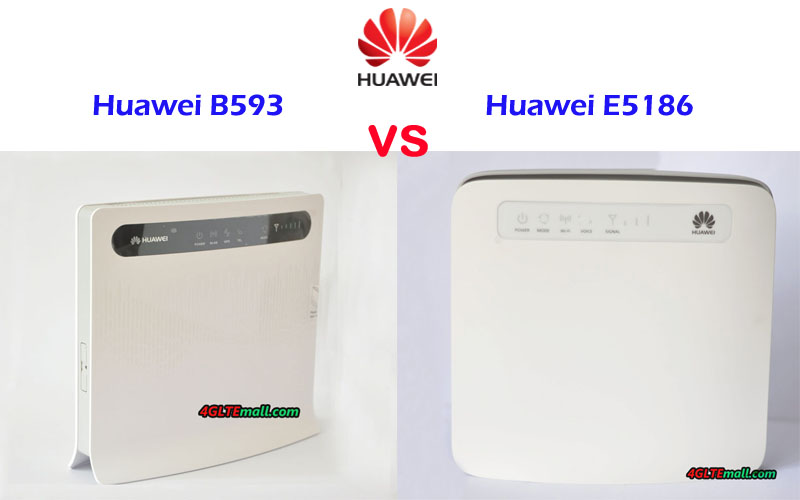 On the back, there is also a line of interfaces, including 4G LAN port(one for WAN/LAN), two telephone port, one USB 2.0 port and power plug port. On the Huawei E5186, there is a power button to switch on or off the power. Huawei B593 power button is at the side of the SIM card slot. The Huawei E5186 SIM card slot is also at the body side with the WPS and WIFI button. Huawei E5186 uses Micro SIM card while the first generation LTE router B593 uses standard SIM card.
On the back, there is also a line of interfaces, including 4G LAN port(one for WAN/LAN), two telephone port, one USB 2.0 port and power plug port. On the Huawei E5186, there is a power button to switch on or off the power. Huawei B593 power button is at the side of the SIM card slot. The Huawei E5186 SIM card slot is also at the body side with the WPS and WIFI button. Huawei E5186 uses Micro SIM card while the first generation LTE router B593 uses standard SIM card. 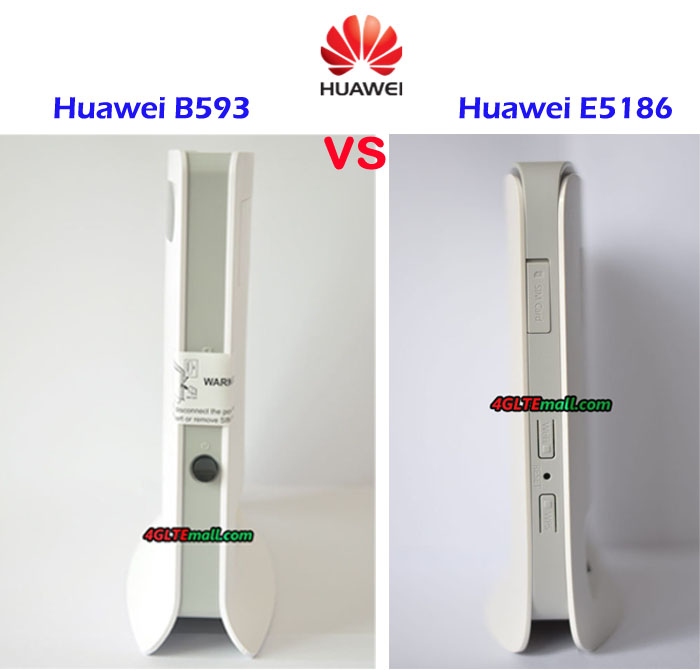 Huawei B593 VS E5186 Specs and variant models From the specs, we can’t see much difference between the two Huawei routers. Actually, as the upgraded version of Huawei B593, Huawei E5186 almost followed the design of Huawei B593 and has just little adjustment. To meet the different LTE frequency bands worldwide, Huawei had assigned many variant models for LTE CPE B593, such as B593u-12, B593s-22, B593s-82, B593u-91, B593s-850, B593s-601, B593s-516, B595s-931 etc… Huawei E5186 also has two variant models: E5186s-22a and E5186s-61a. You can check details specs of the variant models on the product page. And below the table shows the details specs of Huawei E5186 and Huawei B593 Router for reference:
Huawei B593 VS E5186 Specs and variant models From the specs, we can’t see much difference between the two Huawei routers. Actually, as the upgraded version of Huawei B593, Huawei E5186 almost followed the design of Huawei B593 and has just little adjustment. To meet the different LTE frequency bands worldwide, Huawei had assigned many variant models for LTE CPE B593, such as B593u-12, B593s-22, B593s-82, B593u-91, B593s-850, B593s-601, B593s-516, B595s-931 etc… Huawei E5186 also has two variant models: E5186s-22a and E5186s-61a. You can check details specs of the variant models on the product page. And below the table shows the details specs of Huawei E5186 and Huawei B593 Router for reference: Model Huawei E5186 Huawei B593 Product type LTE WiFi Router LTE WiFi Router Category LTE Cat.6 LTE Cat.3 Chipset HiSilicon LTE Cat6 Chipset Qualcomm MDM9200 Data rates DL 300Mbps/UL 50Mbps DL 100Mbps/UL 50Mbps Supported 4G LTE frequency bands E5186s-22a: Band 1/3/7/8/20/38 E5186s-61a: Band 3/7/28/40 * B593u-12: Band 1/3/7/8/20 * B593s-22: Band 1/3/7/8/20 * B593s-82: Band 38/40 * B593s-601: Band 3/7/40 * B593s-516: LTE FDD Band 2/4/5/7/8 WLAN 802.11a/b/g/n/ac, dual-band 2.4GHz & 5GHz 802.11b/g/n, dual-band 2.4GHz Max supported users 64 users 32 users MIMO 2 x 2 MIMO n/a Connector for external antenna Two, SMA-female jacks Two, SMA-female jacks Buy Antenna Huawei E5186 external antenna Huawei B593 External Antenna App management Huawei Hilink APP Huawei Hilink APP SIM Size Micro SIM Stand SIM Battery NO NO Dimensions 190 mm × 200 mm × 32 mm 190 mm x 35 mm x 176 mm Interfaces * 3 x LAN port(45) * 1 x LAN/WAN port (45) * 2 x telephone port(RJ11) * Two external LTE antenna ports (SMA-J1.5) * One micro-SIM card slot * 1 x USB 2.0 port * 3 x LAN port(45) * 1 x LAN/WAN port (45) * 2 x telephone port(RJ11) * Two external LTE antenna ports (SMA-J1.5) * One stand SIM card slot * 1 x USB 2.0 port Datasheet Huawei E5186 Datasheet(PDF) LTE CPE B593 Datasheet User Manual Huawei E5186 User Manual(PDF) LTE CPE B593 Manual Other features Firewall, CS Voice, VoIP, TR069 Remote Management, HTTP Online Upgrade, QoS, USB Share, UPnP, IPV6, DLNA, Fax, Print, VPN DHCP, Firewall, URL filter, LAN MAC filter, IP Filter, DMZ, Port forwarding Reviews Huawei E5186 Review Huawei B593 Router Review 449.00USD 259.00USD 189.00USD 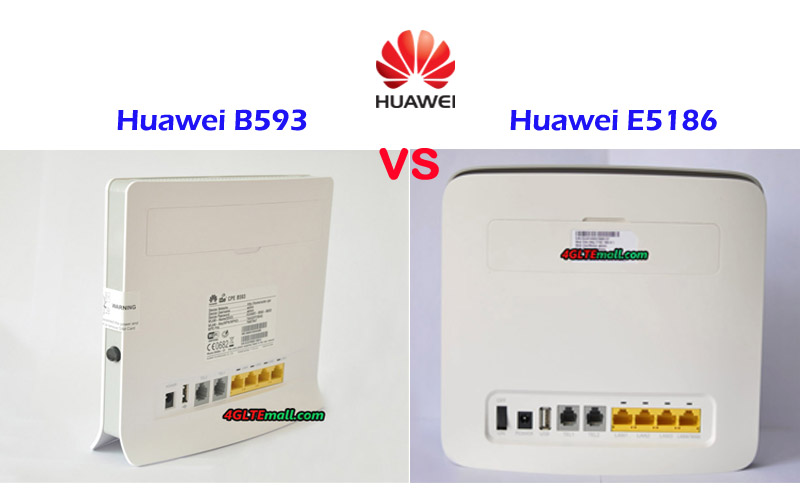 Huawei E5186 VS B593 Speed Test If you want to know the real speed performance of the two router, check the Huawei E5186s-22 vs Huawei B593u-12 speed test: [embed]https://youtu.be/qUHrShcHQvI[/embed] Summary From the specs table, we can see the Huawei E5186 is more advanced which could support up to 300Mbps download speed thanks to LTE Cat.6 with 2 x 2 MIMO and carrier aggregation technology. The speed is almost three times faster than the speeds of Huawei B593 router. The interfaces features are very similar in the two Huawei LTE Router with Ethernet ports. Huawei E5186 WiFi router could support maximum of up to 64 users, which is the double quantity of that on Huawei B593 router. So if you want to buy a fast 4G router, the Huawei E5186 would be the right one. The advantage of Huawei B593 router is that it has many variant models for more LTE frequency bands, if you are looking for a router for specific bands, you may find one in LTE B593 variant models. And the Huawei B593 price is much cheaper than the price when it’s first available in the market. And it’s also much cheaper than Huawei E5186 price. If you don’t have enough budgets for Huawei LTE CPE E5186, then Huawei B593 would provide 4G speed for your internet access.PR
Huawei E5186 VS B593 Speed Test If you want to know the real speed performance of the two router, check the Huawei E5186s-22 vs Huawei B593u-12 speed test: [embed]https://youtu.be/qUHrShcHQvI[/embed] Summary From the specs table, we can see the Huawei E5186 is more advanced which could support up to 300Mbps download speed thanks to LTE Cat.6 with 2 x 2 MIMO and carrier aggregation technology. The speed is almost three times faster than the speeds of Huawei B593 router. The interfaces features are very similar in the two Huawei LTE Router with Ethernet ports. Huawei E5186 WiFi router could support maximum of up to 64 users, which is the double quantity of that on Huawei B593 router. So if you want to buy a fast 4G router, the Huawei E5186 would be the right one. The advantage of Huawei B593 router is that it has many variant models for more LTE frequency bands, if you are looking for a router for specific bands, you may find one in LTE B593 variant models. And the Huawei B593 price is much cheaper than the price when it’s first available in the market. And it’s also much cheaper than Huawei E5186 price. If you don’t have enough budgets for Huawei LTE CPE E5186, then Huawei B593 would provide 4G speed for your internet access.PR -
Huawei 4G WiFi Router B618 VS E5186
Since Huawei LTE router WiFi is very popular in the global market, if you want to buy a 4G SIM router for home or office, you may consider Huawei LTE routers such as Huawei B618 or predecessor model Huawei E5186. But what’s the difference between the Huawei E5186 router and B618 CPE? And which one is better to buy? The questions would be answered in this article.
Huawei E5186 VS B618 CPE Appearance and Interfaces
If you had used a Huawei 4G router, you may know the Huawei E5186 router, which is the best seller of 4G LTE-A router from Huawei. It’s in white color and in a traditional router design. On the front, there are five indicators on the front for Power, Mode, WiFi, Voice, and Signal. On the back, there are 4 Ethernet Ports for LAN (One is for LAN & WAN), two Telephone ports and one USB 2.0 port. The Huawei B618 4G LTE router is the latest new LTE advanced Pro router, which is in a new design of a Cube in white color. It also has some indicators on the front vertically for Signal, Power, Status, LAN, WiFi, Mode, among which the WPS buttons are available.
The Huawei B618 Router also has the Ethernet ports on the back, but there are only two LAN port, one of which is for both LAN and WAN. Only one telephone port is available below the Ethernet port. The USB 2.0 port is above the Ethernet port. The power button and connectors for external 4G Antennas are available on the Ethernet and USB ports. The connector type is TS-9. If you need Huawei B618 antenna, you must buy an LTE Antenna with two TS-9 connectors. The Huawei E5186 also has two connectors for an external antenna on the back covering a long cap. The connector type is SMA-Female. If you need Huawei E5186 external antenna, you must buy an LTE antenna with two SMA connectors.
Huawei B618 VS E5186 Specs and Variant models
If you had some blogs about 4G LTE devices, you may know that the many LTE devices have variant models to support various LTE frequency bands over the world. To support these LTE bands, Huawei E5186 router has two variant models E5186s-22a and E5186s-61a. The Huawei B618 also has two sub-models: B628s-22d and B618s-65d. From the appearance, we can only see the difference is in the design and Ethernet ports. Regarding the data transmission performance and other features, you may check the table for Huawei E5186 specs and Huawei B618 specs:
Model Huawei B618 Huawei E5186 Product type LTE WiFi Router LTE WiFi Router Category LTE Cat.9/ Cat.11 LTE Cat.6 Chipset HiSilicon Balong 750 HiSilicon LTE Cat6 Chipset Data rates DL 600Mbps/UL 100Mbps DL 300Mbps/UL 50Mbps Supported 4G LTE frequency bands Huawei B618s-22d: Band 1/3/7/8/20/38 Huawei B618s-65d: 1/3/5/7/8/28/40 Huawei E5186s-22a: Band 1/3/7/8/20/38 Huawei E5186s-61a: Band 3/7/28/40 WLAN 802.11a/b/g/n/ac, dual-band 2.4GHz & 5GHz 802.11a/b/g/n/ac, dual-band 2.4GHz & 5GHz Max supported users 64 users 64 users MIMO 4 X 4 MIMO 2 x 2 MIMO Connector for external antenna Two, TS-9 jacks Two, SMA-female jacks Buy Antenna Huawei B618 Antenna Huawei E5186 external antenna App management Huawei Hilink APP Huawei Hilink APP SIM type Micro SIM Micro SIM Battery NO NO Dimensions 95mm × 95mm × 208mm 190 mm × 200 mm × 32 mm Interfaces * 1 x LAN port(45) * 1 x LAN/WAN port (45) * 1 x telephone port(RJ11) * 1 x USB 2.0 port * 3 x LAN port(45) * 1 x LAN/WAN port (45) * 2 x telephone port(RJ11) * Two external LTE antenna ports (SMA-J1.5) * One micro-SIM card slot * 1 x USB 2.0 port Datasheet Huawei B618 Datasheet Huawei E5186 Datasheet(PDF) User Manual Huawei B618 User Manual Huawei E5186 User Manual(PDF) Other features DHCP Server, DNS RELAY and NAT, VoLTE, IPv4 /IPv6 dual stack Firewall, CS Voice, VoIP, TR069 Remote Management, HTTP Online Upgrade, QoS, USB Share, UPnP, IPV6, DLNA, Fax, Print, VPN Reviews Huawei B618s-22d Review Huawei E5186 Review Price/USD 449.00USD 259.00USD Summary
From the specs table, we can see the Huawei B618 router is more advanced than unlocked Huawei E5186 router. LTE CPE B618 could support downlink speed up to 600Mbps with 4 x 4 MIMO technology, which is almost double faster than that of Huawei E5186. The two variant models of the two routers cover similar LTE frequency bands, which mean they are designed for same areas. However, the advanced Huawei B618 has fewer Ethernet interfaces than Huawei E5186. If you would use the router with more than 2 devices through Ethernet port, you’d better select the Huawei E5186 as a home or office router. However, if you use the router mainly through WiFi, the Huawei B618 router would be very good. Since the two Huawei Routers would provide wireless internet for up to 64 users, Huawei B618 provider fast internet speeds.
Of course, the Huawei B618 provide faster speeds with advanced technologies, the price would be more expensive than Huawei E5186 router. So if you don’t have enough budget for B618 CPE, the Huawei 5186 is recommended, in our test, it’s good enough for most cases in our daily life.
-
Difference between AT&T Unite Explore (815s) and Nighthawk M1
As the top network provider in the USA, AT&T had presented much 4G mobile broadband for wireless LTE network connection. They are very popular with the end-users. However, for those who are unfamiliar with the 4G LTE Wireless routers, they may have trouble to select the best LTE router for themselves. The AT&T Unite Explore and Nighthawk M1 are the two most popular LTE mobile hotspots. Someone may ask: what’s the difference between the AT&T Unite Explore and Nighthawk M1? Which one is better? We will review the features and specs of the two mobile hotspots. You may get the answer from this article.
Netgear AC815S VS Nighthawk M1 MR1100 Appearance and Interfaces
The AT&T Unite Explore comes from the manufacturer Netgear and the model number is Netgear Aircard 815s. The AT&T Nighthawk M1 also comes from the Netgear. The Aircard 815s AT&T was available in the market much earlier than the latest AT&T Nighthawk M1. If you had read some promotion post from AT&T, you may know the Aircard 815s is the world’s first rugged mobile hotspot, which is waterproof and dust-proof. Like other Netgear WiFi hotspot AT&T, Netgear Aircard 815s has a touch screen on the front and two buttons (Home and Back) at the side of the screen. The Nighthawk M1 is different this time, it has a round screen, but not touch screen. The power status and signal status are indicated by the LED indicators around the screen.
The AT&T Unite Explore logo is at the left side of the screen. Two connectors for external antennas are available at the edge side of the body. The Nighthawk M1 also has two connectors for external antennas, and they have the same connector type TS-9. The battery of Aircard 815s and Nighthawk M1 could be removed for exchange and they both use Micro SIM card size. They both have a USB3.0 interface. The unique feature of Netgear M1 is that it also has on Ethernet port for LAN and USB type-A for output. This feature should be highlighted because there are very few 4G mobile router with Ethernet port in the market.
ATT Unite Explore vs Nighthawk M1 Specs
From the appearance and interfaces, we can see the two AT&T 4G mobile hotspots are very different. The ATT Unite Explore special feature is the rugged design with a touchscreen. The Netgear Nighthawk M1 AT&T seems more powerful with Ethernet port and more interfaces. However, the Nighthawk M1 doesn’t configure a touchscreen. Let’s have a check the full specs of AT&T unite explore and Nighthawk M1.
Model Netgear Aircard 815s Netgear Nighthawk M1 Product type LTE Mobile Hotspot LTE Mobile Hotspot Category LTE Cat.9 LTE Cat.16 Chipset Qualcomm MDM9240 Qualcomm MDM9x50 Data rates DL 450Mbps/UL 100Mbps DL 1Gbps/UL 100Mbps Supported 4G LTE frequency bands B1, B2, B3, B4, B5, B7, B12, B17, B29, B30 -- Telstra Nighthawk: Band 1/3/7/8/28 -- AT&T Nighthawk: Band 1/2/3/4/5/7/12/29/30/66 WLAN 802.11a/b/g/n/ac, dual-band 2.4GHz & 5GHz 802.11a/b/g/n/ac, dual-band 2.4GHz & 5GHz Max support users 15 users 20 users MIMO 2 x 2 MIMO 4 X 4 MIMO Connector for external antenna Two, TS-9 jacks Two, TS-9 jacks Buy Antenna AT&T Unite Explore Antenna AT&T Nighthawk M1 Antenna App management Netgear Aircard APP Netgear Aircard APP SIM type Micro SIM Micro SIM Battery 4340 mAh 5040 mAh Dimensions 112 x 68.6 x 15.45mm 105.5 x 105.5 x 20.35 mm Ethernet Port No One Ethernet Port Datasheet download AT&T Aircard 815s Datasheet AT&T Nighthawk M1 Datasheet User Manual AT&T Unite Explore Manual AT&T Nighthawk M1 Manual Other features 3 band CA 4 band CA Reviews AT&T unite explore review Netgear Nighthawk M1 AT&T Review Price 349.00USD 459.00USD Summary
From the table, we can see the Nighthawk M1 AT&T is more advanced with the support of LTE Category 16, which could achieve download speed to 1Gigabit/s. The AT&T Aircard 815s is an LTE Cat.9 hotspot supporting download speed up to 450Mbps. The AT&T Nighthawk supports more WiFi users up to 20 users while Aircard 815 supports 15 users. The Nighthawk M1 and AT&T Unite explore supports similar LTE frequency bands for ATT. However, the Nighthawk M1 has a variant model for Australian network provider Telstra, which works on difference LTE frequency bands.
What’s more, the Nighthawk M1 supports more LTE advanced Pro network technology such as 4 x 4 MIMO and 4 band carrier aggregation, which make the high-speed downlink possible. Since both of the AT&T mobile hotspots has the JumpBoost feature, which makes the Netgear hotspot work like a power bank to charge other devices. The Aircard 815 has a battery of 4340mAh capacity while the Nighthawk M1 has a battery of 5040mAh. So the AT&T Nighthawk M1 is more powerful than the AT&T Unite Explore in almost all the aspects, which means the Nighthawk M1 price would be much higher than the older model Aircard 815s. If you are a price-sensitive buyer, the Netgear Aircard 815s seems good enough, but if you want a future-proof pocket hotspot, the Nighthawk M1 is no doubt the best one. By the way, there are unlocked AT&T Unite Explore and Unlocked Nighthawk M1 AT&T available on www.4gltemall.com online store. You can buy unlocked ones for global use.
-
Netgear Aircard 800s vs Aircard 810S
As a popular series of LTE gadgets, Netgear 4G aircards are well-known many countries in Europe and the United States. Especially the hot Netgear Aircard 810s mobile hotspot, is the best seller for LTE advanced networks. Recently, Netgear provided a new 4G LTE mobile router Aircard 800s for Australian network provider Optus and Optus named it as Optus WiFi modem 800s. If this article, we will review the difference between the two mobile hotspots and see which one is better.
Netgear AC810S VS AC800S Appearance and Interfaces
The Netgear AC810 has a 2.4 inch touchscreen on the front with two buttons for option: home and back. We have Aircard 810 in the version of Telstra WI-FI 4GX Advanced III. But it's already unlocked for global use. The Telstra Aircard 810 has the logo on the top side of the front. On the back, the Netgear logo is on the back cover, which could be removed to insert SIM card and battery. The Aircard 800s has similar features, on the front, there is a 2.4 inch touchscreen and Optus logo. Two buttons (home and back buttons) are available at the side of the screen. The Netgear logo is on the back cover, which could also be removed for changing SIM card or battery. And they both have two connectors for an external antenna. And the connector type is TS-9. They both use Micro SIM card to get WLAN network for internet access. The Netgear Aircard 810s is available for Telstra in black color and Optus 4G WiFi modem is in white color.
Netgear Aircard 800s vs Aircard 810s Specifications and features
From the appearance, we can see the color difference, but can’t get other difference. It seems they are made by the same model. Let’s looks at the Specifications of Aircard 810s and 800s and see what the real difference is for buyers and users.
Model Netgear Aircard 810s Netgear Aircard 800S Product type LTE Mobile Hotspot LTE Mobile Hotspot Category LTE Cat.11 LTE Cat.9 Chipset Qualcomm Snapdragon X12 Qualcomm MDM9240 Data rates DL 600Mbps/UL 100Mbps DL 450Mbps/UL 50Mbps Supported 4G LTE frequency bands B1, B3, B7, B8, B28 B1, B3, B7, B28, B40 WLAN 802.11a/b/g/n/ac, dual-band 2.4GHz & 5GHz 802.11a/b/g/n/ac, dual-band 2.4GHz & 5GHz Max support users 15 users 15 users MIMO 2 x 2 MIMO 2 x 2 MIMO Connector for external antenna Two, TS-9 jacks Two, TS-9 jacks Buy Antenna Aircard 810s External Antenna Aircard 800s External Antenna App management Netgear Aircard APP Netgear Aircard APP SIM type Micro SIM Micro SIM Battery 2930 mAh 2930 mAh Dimensions 112 x 68.6 x 15.45mm 110 x 68 x 16.1 mm Ethernet Port No No Datasheet download Netgear AC810S Datasheet Netgear AC800S Datasheet User Manual Telstra 4GX Advanced III Manual Optus 4G modem 800S Manual Other features 3 band CA 3 band CA Reviews Netgear Aircard 810s review Netgear Aircard 800s review Price 229.00USD 199.00USD Aircard 800s vs 810S Conclusion
From table for the Aircard 810s specs and Aircard 800s specs, the Netgear 810s is more advanced with Qualcomm Snapdragon X12 chipset which can achieve download speed up to 600Mbps. Netgear Aircard 800s is also good to mention with Qualcomm MDM9240 chipset which could support download speed to 450mbps. They support same LTE frequency band B1, B3, B7, B28, but Aircard 810s supports band 8 while Aircard 800s supports band 40, which means the Aircard 810s can’t support TDD-LTE network. Other features of the two Netgear 4G mobile hotspots are same as described. Since the Netgear AC810S is more advanced, the price is a little bit higher than that of Aircard 800s. If you would buy a Netgear 4G Router between the two models, first, you need check whether the Aircard 810s or 800s would be compatible with your network provider’s network, and then you need to consider the price. The real performance of the two hotspots 4G has no much obvious difference.
-
Huawei B528 VS Huawei B529 LTE Cube
Since more and more Huawei LTE cubes available in the market, more and more people accept the Huawei Cubes as consumer electronics. Actually, they are still the wireless routers essentially. Huawei assigns the 4G wireless gateway to a new design and combines the workmanship with router functions to make the Cube series product very special but attractive for home use. Huawei B528 and B529 cube are two latest LTE cube for Europe market. Since they are very newly released, many people may don’t know them or don’t know what’s the difference between the Huawei B528 and B529. We will have a review about the two LTE routers and give some buy recommendation for potential users.
Huawei B528 VS B529 Appearance and Interfaces
Frankly speaking, the Huawei B528 LTE Router and B529 Cube are both cool in the design. You may not think they are Huawei wireless 4G Router when you first look at them. The Huawei B528 is in black like a cake and the Huawei B529 looks like a humidifier in white. On the front of Huawei B528, there are indicators for Mode, LAN, WiFi, and Power while the Huawei B529 Cube changes the Mode to Signal. The power button is below the indicators. On the back of Huawei B528, only one Ethernet port is available for LAN. The Huawei B529 has one Gigabit Ethernet port for LAN with one VoIP port. The same feature is the power plug below the Ethernet port. And above the Ethernet port, there are two connectors for external antennas. The connector type is both TS-9. So if you have a Huawei B528 external antenna, you can use it with Huawei B529. What’s more, the two WiFi Cube both uses Micro SIM size and locate the SIM card slot at the bottom of the devices.
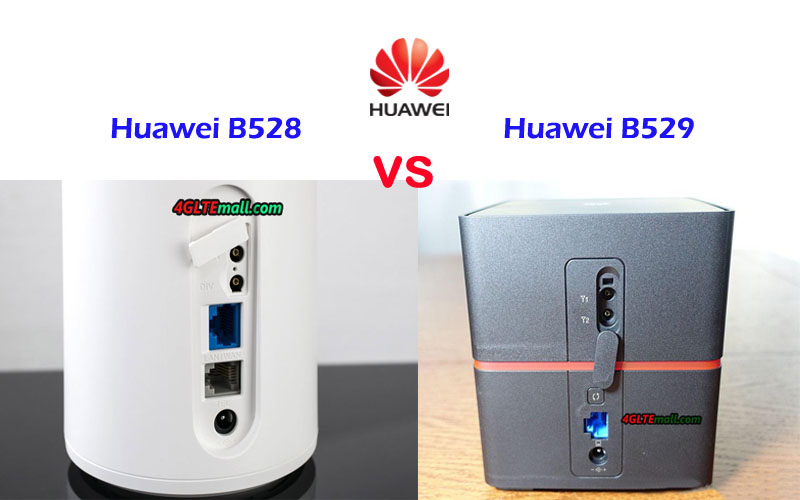
Huawei B529 VS B528 Specs and Variant model
Currently, the Huawei B529 is only available for T-mobile in Europe and get a new name as HomeNet Box. The specific model number is Huawei B529s-23a. Like the B529 Cube, the Huawei B528 is available for the network provider Vodafone and gets a new name Vodafone GigaCube with specific model number Huawei B528s-23a. Unlike the Huawei B618 Cube, they both have an only variant model now. But we are not sure whether there will be more variant models in near future.
From the appearance and interface, you may not get the core difference between the two routers. Let’s have a looks at the Vodafone B528 specs and Huawei B529s-23a specs in the tables below:
Model Huawei B528s-23a Huawei B529s-23a Product type LTE WiFi Cube LTE WiFi Cube Category LTE Cat.6 LTE Cat.6 Chipset HiSilicon Balong 722 HiSilicon LTE Cat6 Chipset Data rates DL 300Mbps/UL 50Mbps DL 300Mbps/UL 50Mbps Supported 4G LTE frequency bands LTE B1, B3, B7, B8, B20, B32, B38 Band 1/3/7/8/20/32/38 WLAN 802.11a/b/g/n/ac, dual-band 2.4GHz & 5GHz 802.11a/b/g/n/ac, dual-band 2.4GHz & 5GHz Max support users 64 users 64 users MIMO 2 x 2 MIMO 2 x 2 MIMO Connector for external antenna Two, TS-9 jacks Two, TS-9 jacks Buy Antenna Huawei B528 External Antenna Huawei B529 External antenna App management Huawei Hilink APP Huawei Hilink APP SIM type Micro SIM Micro SIM Battery NO Yes, non-removable 3000mAh battery Dimensions 105 mm x 90mm x 181 mm 120 x 120 x 125mm Interfaces * 1 x power adapter port * 1 x LAN port(RJ 45)* 1 x RJ11 (VoIP)* Two external LTE antenna ports (TS-9) * One micro-SIM card slot * 1 x power adapter port * 1 x LAN port(RJ 45) * Two external LTE antenna ports (TS-9) * One micro-SIM card slot Datasheet Huawei B528 Datasheet Huawei B529 Datasheet User Manual Huawei B528 Manual Huawei B529 Manual Other features IPv4 /IPv6 dual stack DHCP Server, DNS RELAY and NAT Reviews Huawei B528s-23a Review Huawei B529 Review Price/USD 399.00USD 299.00 Conclusion
The Huawei B528s-23a and HomeNet Box B529s-23a are both LTE Category 6 router, which could support peak download speed to 300mbps and upload speed. They could both support maximum users up to 64 devices. They support even same LTE frequency bands. The only difference is on the Huawei B529 has one more VoIP port than B528. So if you would buy one home router between the two, you would consider the interface first. If you don’t use the VoIP, just take the preferred appearance and make the decision. Per our test, the two routers could support fast internet connection in the real network.

